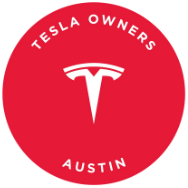The Biden administration’s Inflation Reduction Act was initially set to ensure that the U.S. would meet all its battery demand for electric vehicles through local manufacturing by the end of the decade. However, recent developments have cast doubt on whether this goal will be achieved, as billions of dollars worth of clean energy projects have stalled in the first quarter of 2025. This setback comes at a time when the U.S. is in a stronger position than ever to embrace electric vehicles, but the progress risks being derailed by tariff disputes, ultimately benefiting China’s dominance in the EV market.
In the latest installment of Critical Materials, we delve into the potential ramifications of America’s clean energy programs hitting a roadblock. According to a report by clean energy advocacy group E2, the U.S. saw a significant decline in the announcement of clean energy manufacturing projects, dropping from about $1 billion per month to $176 million in January alone. This decline can be attributed to President Trump’s efforts to roll back investments in EVs, charging infrastructure, and battery manufacturing, all of which were aimed at reducing the country’s dependence on China and transitioning away from fossil fuels.
One of the notable stalled projects is Aspen Aerogels’ $1 billion plant in Georgia, which specialized in producing fire suppressants for EV batteries. The company decided to shift production to its existing factories in the U.S., China, and Mexico, citing uncertainties surrounding tariffs and regulations. Similarly, battery company Kore Power abandoned its plans to build a $1 billion plant in Arizona, further underscoring the challenges faced by manufacturers in the current climate.
Despite these setbacks, some OEMs have managed to forge ahead with their EV manufacturing and battery plant projects. Hyundai recently inaugurated its $7.6 billion Metaplant in Georgia, where the Ioniq 5 and Ioniq 9 electric SUVs are already in production. The company’s commitment to expanding its electric vehicle lineup demonstrates a continued investment in the U.S. market. Additionally, Hyundai is also constructing a $5 billion steel plant in Louisiana, indicating a broader commitment to local manufacturing in the face of tariffs on imported steel and aluminum.
Other major projects, including Toyota’s battery plant in North Carolina, LG Energy Solutions’ plant in Arizona, and Ford’s BlueOval Battery Park in Michigan, remain on track for production or have already been completed. While challenges persist, these success stories highlight that the U.S. is making strides towards a more sustainable transportation future, even as it continues to lag behind China in the adoption of new energy vehicles.
In conclusion, the recent slowdown in clean energy projects underscores the complexities and uncertainties facing manufacturers in the U.S. However, the ongoing investments by key players in the EV sector suggest that the country is not giving up on its ambitions to compete in the global electric vehicle market. By navigating the challenges posed by tariffs and regulatory changes, the U.S. can continue its transition towards a cleaner, more sustainable transportation ecosystem.
Toyota’s decision to cover the tariff costs for its suppliers highlights the impact protectionist policies can have on the global automotive industry. With the U.S. imposing tariffs on imported goods, automakers are forced to find ways to mitigate the financial burden. While larger companies like Toyota may be able to absorb these costs in the short term, the long-term effects could be detrimental to the industry as a whole.
As Japan’s automakers grapple with the looming threat of tariffs, China continues to strengthen its position in the electric vehicle market. With EVs accounting for 8.1% of total vehicle sales in America in 2024, it’s clear that the future of the automotive industry lies in electric technology. However, protectionist policies and an anti-EV administration are making it easier for China to extend its dominance in this sector.
While Japanese automakers face the challenges of tariffs, Chinese companies like Nio and Xpeng are rapidly expanding their presence in the U.S. market. With a growing demand for electric vehicles and the support of the Chinese government, these companies are well-positioned to capitalize on the shifting landscape of the automotive industry.
It’s crucial for policymakers to consider the long-term implications of protectionist policies on the global automotive industry. As the world transitions towards electric vehicles, fostering a competitive and innovative market will be essential for driving progress and sustainability in the industry.
As Japan’s automakers navigate the challenges of tariffs and increased competition from Chinese companies, the future of the automotive industry hangs in the balance. It remains to be seen how these dynamics will shape the industry in the years to come.
With uncertainty looming over the industry, consumers are feeling the impact on their wallets. The tariffs on imported vehicles and parts have led to price increases for new cars, making it more expensive for consumers to purchase a vehicle. This has caused some buyers to rush to dealerships to take advantage of current prices before they go up even further.
For example, Ford reported a significant increase in sales of EVs and hybrids in the first quarter of 2025. This surge in sales can be attributed to consumers wanting to secure a deal before prices rise due to the tariffs. Automakers are also feeling the effects of the tariffs, with some considering moving production back to the U.S. to avoid the increased costs of importing vehicles.
President Trump’s openness to reducing tariffs if other countries offer something “phenomenal” in return adds another layer of uncertainty for the industry. While some relief may be on the horizon, it is still unclear what the future holds for trade relations and how it will impact the auto industry.
Overall, the tariffs on imported vehicles and parts have created a challenging environment for both consumers and automakers. With prices on the rise and uncertainty about trade relations, the auto industry faces a period of adjustment as it navigates the ever-changing landscape of international trade.

